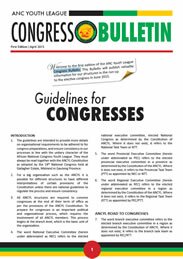Build a Savings Plan: Defining Goals, Timelines, and Buckets
If you want lasting financial stability, you need more than just good intentions—you need a practical savings plan. By setting clear goals, assigning deadlines, and dividing your money into specific savings buckets, you can make your future expenses more predictable and manageable. This approach helps you respond better to surprises and supports your bigger ambitions. But before you start moving money, consider what it takes to build a plan that truly works for you—here’s where to begin.
Understanding the Principles of Savings Buckets
A structured savings plan is essential for effective financial management. Organizing your funds into separate categories, or "buckets," allows for specific financial goals to be addressed more distinctly.
Utilizing Multiple Savings Buckets enables individuals to allocate funds for various needs such as emergency expenses, healthcare, education, retirement, and business initiatives.
Establishing an account for each bucket facilitates easier monitoring of financial progress. Automation of contributions to these accounts is advisable, as it supports the prioritization of long-term objectives and overall future financial stability.
This method not only assists in efficient money management but also aligns with considerations for insurance and post-retirement financial needs, ensuring adaptability to life's evolving circumstances.
For those seeking further assistance with financial services or inquiries regarding privacy policies, contacting a professional in the field is recommended. All rights are reserved.
Identifying and Defining Your Financial Goals
To ensure that your savings efforts are purposeful and targeted, it is essential to define clear financial goals. Begin by identifying specific objectives, such as establishing an emergency fund, saving for a vacation, or planning for retirement.
Categorize these goals into distinct areas—such as education, healthcare, business endeavors, or insurance—and consider allocating them to separate savings accounts or "Savings Buckets." This approach allows for better tracking of your finances and aids in prioritizing expenditures effectively.
Employing multiple savings buckets can enhance your ability to manage financial resources in a structured manner. It is advisable to align your financial planning with anticipated future needs, as this strategy can increase the likelihood of achieving overarching financial objectives.
Additionally, it is important to review your goals regularly to ensure they remain relevant and that your savings efforts are on track. For further assistance or services, please feel free to reach out. All rights reserved. For additional information, refer to our Privacy Policy.
Setting Appropriate Timelines for Each Savings Objective
Establishing appropriate timelines for each savings goal is an essential component of a comprehensive savings strategy. It is advisable to categorize these goals into different time frames: short-term goals typically address immediate needs, such as emergency expenses; medium-term goals can relate to opportunities such as launching a business; and long-term goals often include preparations for retirement or funding higher education.
Organizing goals into distinct savings buckets facilitates the tracking of progress and the effective allocation of financial resources. For instance, utilizing savings accounts can be effective for short-term needs like healthcare or insurance, while moderate-risk assets might be more suitable for funding expenses post-education.
Regularly reviewing these timelines with a financial advisor is advisable to ensure that the savings strategy remains relevant and responsive to changing circumstances. Consistency in this practice can provide a clearer picture of financial goals and enhance overall financial management.
For further assistance in developing your savings plan, we recommend contacting a qualified financial service professional.
Organizing Accounts by Purpose and Time Horizon
A well-organized structure can enhance progress toward savings objectives. Effective planning involves creating multiple savings categories, such as Today, Tomorrow, and Future accounts, which can assist in tracking distinct goals like education, retirement, healthcare, or business-related expenses.
It is advisable to utilize low-risk accounts for immediate needs and emergency funds to maintain financial stability. Assigning medium-term objectives to “Tomorrow Buckets” can be beneficial, as these accounts typically rely on income strategies and insurance products.
For long-term goals, such as retirement, it is prudent to invest in accounts focused on growth potential. This methodical approach provides clarity in financial planning while accommodating flexibility to adjust as circumstances change.
For additional information, please contact your financial services advisor. All rights reserved. Review our Privacy Policy for further details.
Automating and Monitoring Your Savings Process
Following the establishment of distinct savings goals and the organization of accounts, automation plays a significant role in maintaining the effectiveness of your savings strategy. Implementing automatic transfers to your savings accounts immediately following each payday is advisable. This can include allocations for Retirement, College, Health, or emergency funds, enabling each Savings Bucket to grow consistently over time.
It is prudent to begin with amounts that are manageable within your current financial framework and to incrementally increase these transfers as your financial circumstances change.
Monitoring your progress towards these goals is crucial; employing various financial tools and services can facilitate this process, allowing for ongoing awareness of each Savings Bucket's status.
For further guidance or inquiries regarding your savings strategy, please do not hesitate to reach out to us. We prioritize your privacy, and you can review our Privacy Policy for more information.
All rights reserved. For inquiries related to Business Insurance, please contact us directly.
Adjusting Your Strategy for Changing Circumstances
As financial and personal circumstances change, it is important for individuals to maintain a flexible savings strategy. Regularly reviewing financial goals—ranging from funding education to planning for retirement—enables better alignment of savings priorities. This may involve adjusting Savings Buckets as personal circumstances shift.
In situations where business opportunities arise or unforeseen expenses, such as health or insurance costs, increase, it may become necessary to reallocate funds among various savings accounts. Effective planning incorporates the ability to temporarily halt contributions during financial emergencies, which can prevent long-term setbacks.
Utilizing multiple savings buckets can aid in tracking progress towards individual goals, fostering accountability. While reaching milestones can serve as a motivational tool, it is critical to remain focused on the overall financial strategy rather than individual achievements.
For further guidance or assistance in adapting your savings approach, professional services are available. Please refer to our Privacy Policy and additional details as needed.
Resources for Continued Financial Planning
Reliable financial planning resources are essential for maintaining an effective savings strategy, particularly as your objectives and circumstances change. To create an informed financial plan, consider consulting reputable blogs such as NerdWallet, which offers insights on various topics including savings buckets, education funding, retirement planning, healthcare costs, business expenses, and emergency savings.
Utilizing financial tools provided by banks can assist in estimating future financial requirements and managing savings accounts. Additionally, there are applications available that facilitate the monitoring of multiple savings accounts and provide tracking of financial progress over time.
Podcasts and workshops can serve as valuable avenues for expanding your financial knowledge and planning capabilities.
For information regarding services, insurance options, or privacy practices, it is advisable to reach out to the respective providers or review their Privacy Policies. For further assistance, please contact us. All rights reserved.
Conclusion
By establishing clear goals, timelines, and distinct savings buckets, you’ll make steady progress toward financial stability. Regularly review your plan, automate transfers, and adjust to life’s changes as they come. Maintain consistency by keeping your savings on track, and seek support or use financial tools when needed. With discipline and flexibility, you can overcome challenges, grow your savings, and set a strong foundation for future wealth and security. Start your savings journey today.

 Documents
Documents











